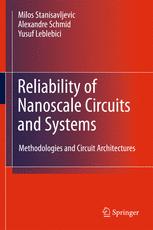

Most ebook files are in PDF format, so you can easily read them using various software such as Foxit Reader or directly on the Google Chrome browser.
Some ebook files are released by publishers in other formats such as .awz, .mobi, .epub, .fb2, etc. You may need to install specific software to read these formats on mobile/PC, such as Calibre.
Please read the tutorial at this link: https://ebookbell.com/faq
We offer FREE conversion to the popular formats you request; however, this may take some time. Therefore, right after payment, please email us, and we will try to provide the service as quickly as possible.
For some exceptional file formats or broken links (if any), please refrain from opening any disputes. Instead, email us first, and we will try to assist within a maximum of 6 hours.
EbookBell Team

5.0
18 reviewsReliability of Nanoscale Circuits and Systems: Methodologies and Circuit Architectures Milos Stanisavljevic Alexandre Schmid Yusuf Leblebici Future integrated circuits are expected to be made of emerging nanodevices and their associated interconnects, but the reliability of such components is a major threat to the design of future integrated computing systems. Reliability of Nanoscale Circuits and Systems: Methodologies and Circuit Architectures confronts that challenge. The first part discusses the state-of-the-art of the circuits and systems as well as the architectures and methodologies focusing the enhancement of the reliability of digital integrated circuits. It proposes circuit and system level solutions to overcome high defect density and presents reliability, fault models and fault tolerance. It includes an overview of nano-technologies that are considered in the fabrication of future integrated circuits and covers solutions provided in the early ages of CMOs as well as recent techniques. The second part of the text analyzes original circuit and system level solutions. It details an architecture suitable for circuit-level and gate-level redundant modules implementation and exhibiting significant immunity to permanent and random failures as well as unwanted fluctuation and the fabrication parameters. It also proposes a novel general method enabling the introduction of fault-tolerance and evaluation of the circuit and architecture reliability. And the third part proposes a new methodology that introduces reliability in existing design flows. That methodology consists of partitioning the full system to design into reliability optimal partitions and applying reliability evaluation and optimization at local and system level.